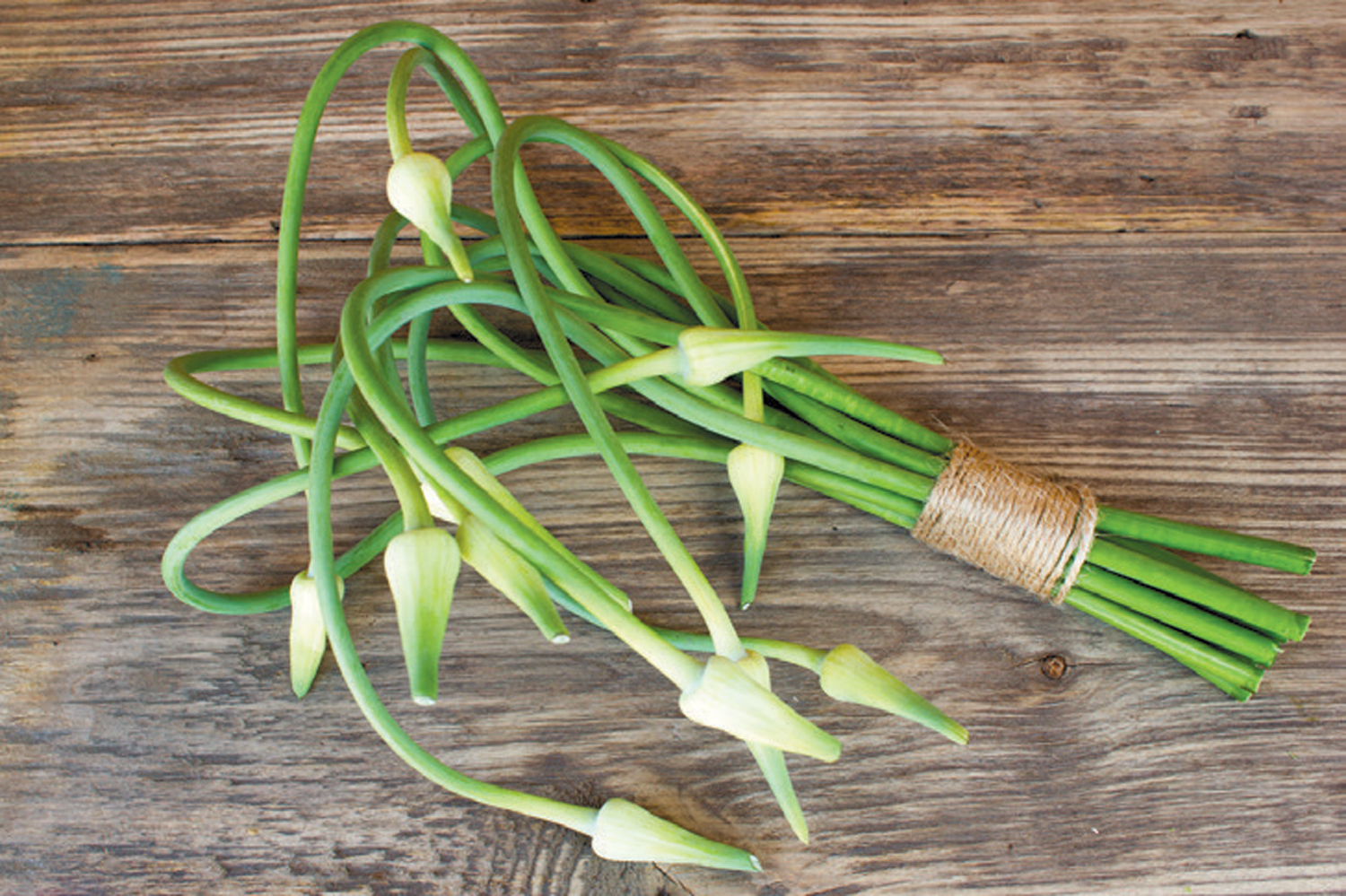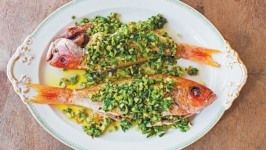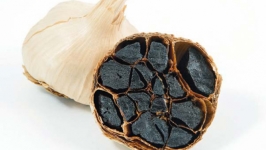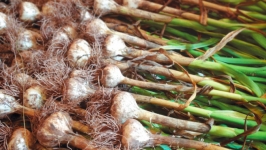Garlic Scapes
A Short-Season Crop with Long-Term Health Benefits
With a bit of planning and a dash of luck, you may be fortunate enough to enjoy garlic scapes before they’re gone. A scape is the stalk and flowering part of the garlic plant, and resembles a long scallion topped with a tapered bud. Because they are only harvested once during the growing season, the time to enjoy them is brief: they are only available for a few short weeks, typically in mid to late June.
“When the garlic plant reaches its full height, it shoots out a stalk with a bud on top,” says Malaika Spencer of Roots to River Farm in Titusville. “The stalk is snapped off before it blooms so that the energy used to make the flower goes into making a bigger bulb instead,” she says. “It’s unusual to get two different types of crops from the same plant, and we still get asked what they are. But once people learn how tasty garlic scapes are, they quickly go into the shopping basket.”
For garlic lovers, the scape eases the wait for the late-summer garlic crop. “Scapes are a treat because you get to enjoy an early taste of garlic well before harvest time,” says Spencer. “You can use them the same way you’d use regular garlic. They are excellent for turning into pesto, or simply grilled whole with a little olive oil and sea salt,” she adds, though she advises trimming off the bud, which can be tough.
Spencer describes scapes as juicy, with a mild, fresh, green taste. She also notes that while they aren’t available for long, they can easily be stored: “Scapes can last if you keep them really cool. Storing them in a plastic bag or container in the fridge will help them keep for several weeks.”
While some home cooks are still learning about these mysterious and ephemeral treats, many have already heard about garlic being good for you.
“The health properties of garlic translate to the scape, but in a much milder form,” says Brenda Murdock, assistant director of clinical and patient services at University Hospital in Newark. “You have to eat a lot of scapes to get the same benefits you would from eating a clove of garlic.”
Murdock explains that like garlic, the scape contains a phytochemical called allicin that’s been highly regarded for its anti-inflammatory and even anti-cancer properties. “It has been shown to stop carcinogens from forming cancer cells,” she says. “Most of the anti-cancer research has been on animal studies and is in the early stages, but scientists are working on isolating the compounds to create a dose that can be scientifically backed.”
Allicin’s powerful antioxidant properties have also been studied. “Allicin helps boost glutathione which is an intercellular antioxidant that helps prevent cytokines from forming,” says Murdock. Cytokines activate white blood cells and cause the area around a cut or injury to get red and puffy.
“A little bit is fine, but we don’t want cytokines activated all the time,” she says. “Chronic inflammation causes stress in the body and can be associated with high blood pressure, heart disease, diabetes, and other chronic diseases that break down the body and prevent it from functioning optimally.”
Perhaps one of the biggest differences that sets scapes apart from the bulb is that they are green because they contain chlorophyll, which is yet another source of antioxidants.
“Antioxidants are important because they catch free radicals and help them go to the liver to get processed out of the body as waste.”
As far as aiding in other processes in the body, leave that to the B vitamins, of which garlic scapes contain a certain concentration of each.
“B vitamins synergize the best when they work together, and garlic scapes contain them all, with B6 and B1 (thiamin) being the highest,” says Murdock. “These vitamins play an important role in everything from initiating the formation of red blood cells, helping with muscle metabolism, and starting the reaction of amino acids, glucose, and lipids. They are the starting line of metabolic processes.”
Though you’ll have to eat a lot more scapes to get the same benefits as garlic, they are hard to compare. Each is delicious in its own way, and whether one is more nutritious than the other, in the long run, every little bit counts.










